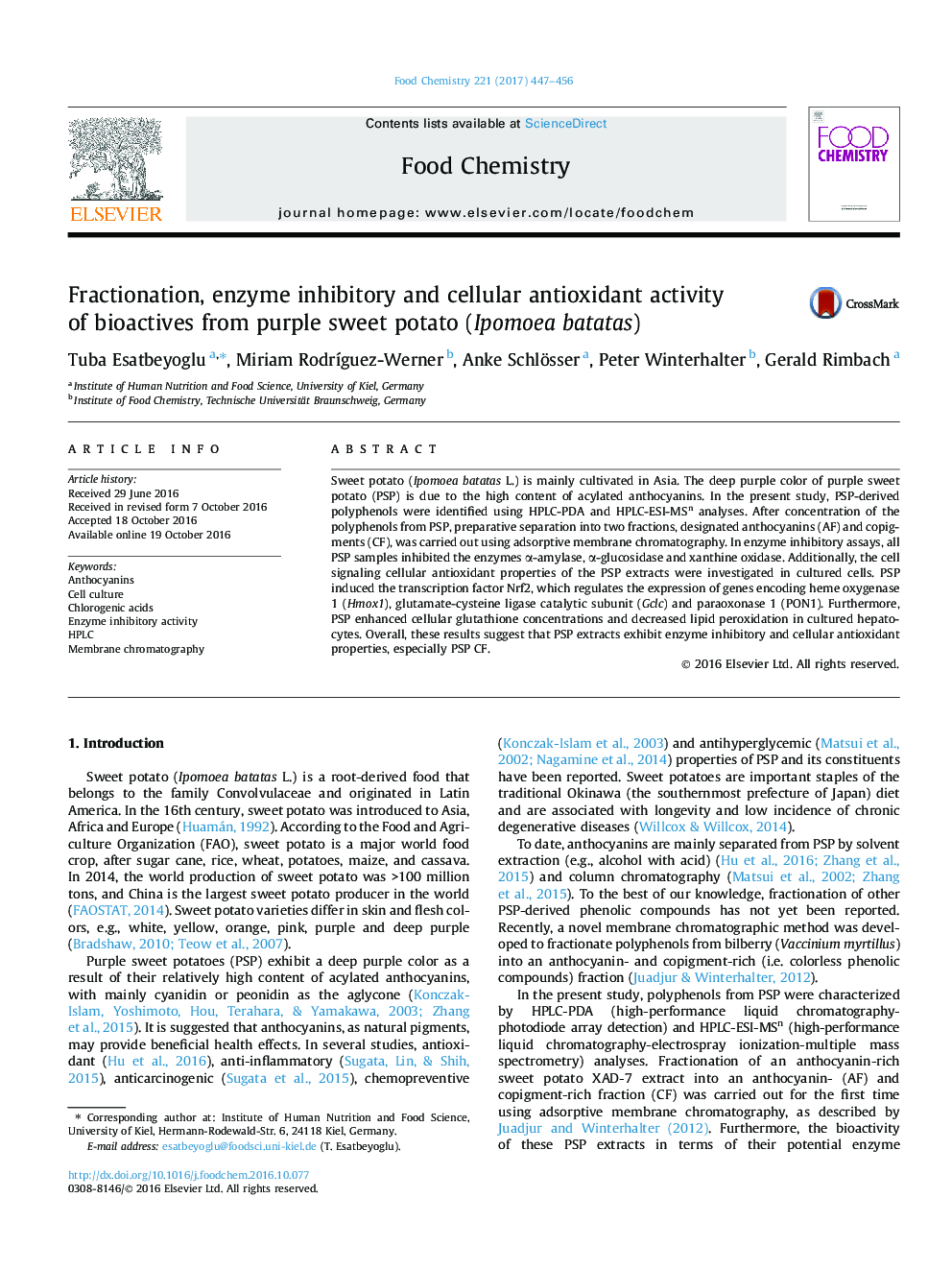| Article ID | Journal | Published Year | Pages | File Type |
|---|---|---|---|---|
| 5133755 | Food Chemistry | 2017 | 10 Pages |
â¢Phenolic compounds of purple sweet potato (PSP) were separated with adsorptive membrane chromatography.â¢PSP inhibited the enzymes α-amylase, α-glucosidase and xanthine oxidase.â¢PSP exhibited cellular antioxidant properties.
Sweet potato (Ipomoea batatas L.) is mainly cultivated in Asia. The deep purple color of purple sweet potato (PSP) is due to the high content of acylated anthocyanins. In the present study, PSP-derived polyphenols were identified using HPLC-PDA and HPLC-ESI-MSn analyses. After concentration of the polyphenols from PSP, preparative separation into two fractions, designated anthocyanins (AF) and copigments (CF), was carried out using adsorptive membrane chromatography. In enzyme inhibitory assays, all PSP samples inhibited the enzymes α-amylase, α-glucosidase and xanthine oxidase. Additionally, the cell signaling cellular antioxidant properties of the PSP extracts were investigated in cultured cells. PSP induced the transcription factor Nrf2, which regulates the expression of genes encoding heme oxygenase 1 (Hmox1), glutamate-cysteine ligase catalytic subunit (Gclc) and paraoxonase 1 (PON1). Furthermore, PSP enhanced cellular glutathione concentrations and decreased lipid peroxidation in cultured hepatocytes. Overall, these results suggest that PSP extracts exhibit enzyme inhibitory and cellular antioxidant properties, especially PSP CF.
